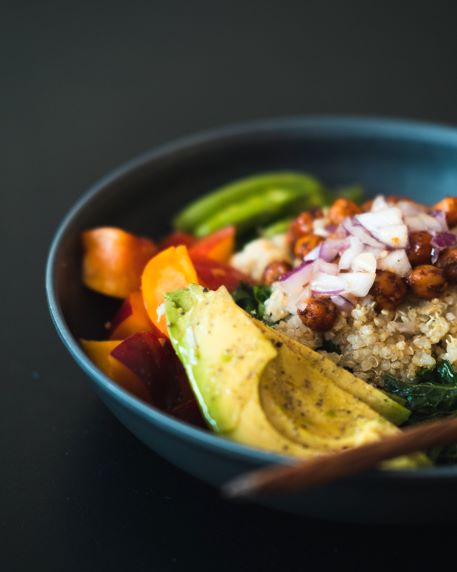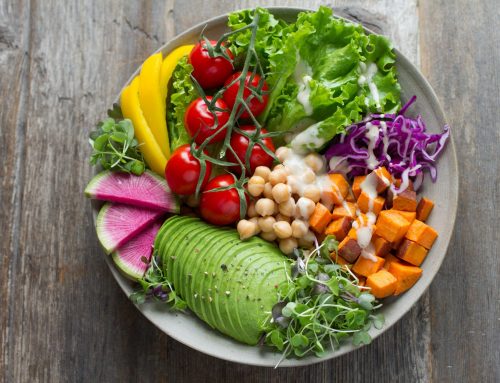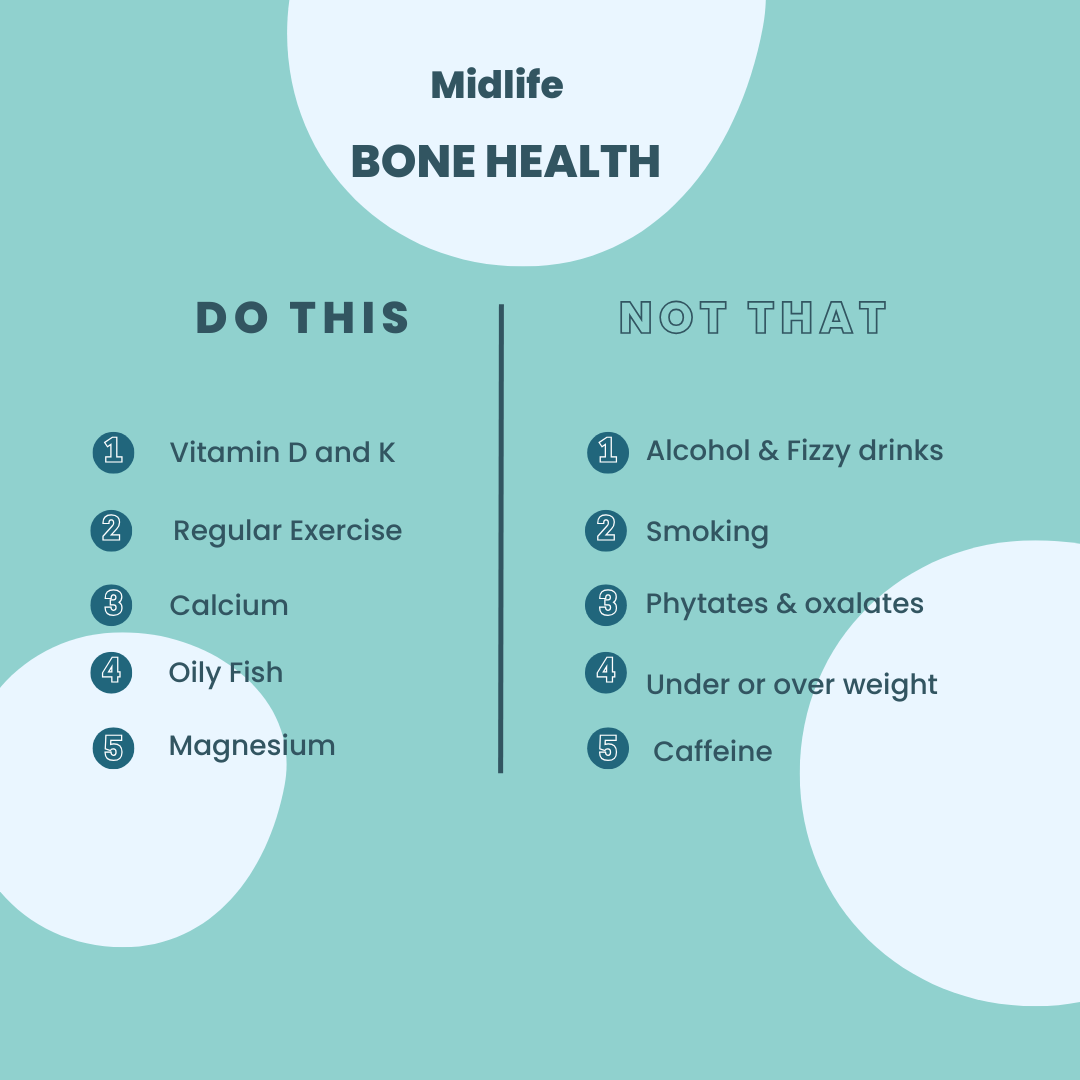A sexy salad for a healthy menopause is ideal if you are trying to eat well this summer but summer fun is wrecking your plans. If you want to feel sexy and confident on your holiday despite menopause, a sexy tasty salad is ideal for menopause health. Despite suffering menopause symptoms, you are trying to eat well this summer so you can look and feel like yourself again. You’d like to feel more confident in your clothes even just going to office. You’ve lost your mojo and your confidence left the building. Firstly, well done. The summer can play havoc with your menopause anyway. Hotter temperatures can affect your already off kilter thermostat and sleep pattern. Whilst we are also super busy with holidays, family, celebrations and are likely stressed. Stress exacerbates those menopause symptoms, you mood may be fluctuating more drastically.
So, I can help with simple healthy salad dressings to make any salad a bit more sexy! You know you need to eat well at menopause, but the thought of chopping and cooking feels too strenuous in the heat and business of summer holidays. Don’t despair I have some tips to inspire and elevate you summer eating!
Menopause
It’s at this time of year we realise we can’t fit into our clothes and wish we had gone to the gym a bit more often. It’s not just menopause weight gain though you feel heavy, bloated, and run down. You easily get bloated and would love to know what to eat to support your menopause digestion. Although summer sun brings a natural feel-good feeling, unfortunately that can also lead us astray when it comes to healthy eating. What’s more there are lots more parties, weddings, and celebrations this year because of our newfound freedoms post lockdown. Let’s face it we deserve to let out hair down a little. Let’s be clear I am not here to be a party pooper! In fact, I recommend ditching a ‘diet’ mentality and enjoying the party food and drink in moderation.
Diets Don’t Work
I don’t do strict diets I empower you to make healthy delicious food choices for a long-term healthy menopause. I can help you get back on track before the summer celebrations make you give up and ditch your healthy eating.
Elevate Your Salad with Dressing
Some love them some hate them, but salads are ideal when made with the right variety of ingredients. No limp lettuce and soft cucumber, boring salad cream. They are easily transportable and often last better than a soggy sandwich for picnics and to take to work too. Presentation is everything get yourself a nice salad box, or a lovely jar to layer your salad veggies. It’s best to add dressing just before serving and they keep refrigerated for a few days. I hear you, aren’t dressings are bad for you? Not necessarily and they may enable you to enjoy your 5 plus veggies a day! As a nutritional therapist I promote half a plate of veggies at every meal. This is because of their many health advantages.
The benefits of salads
Nutrients
Vegetables and fruits are highly nutritious with a range of macro and micronutrients. A variety of foods is essential for us to receive our essential array of nutrients like carbohydrates, vitamins, and minerals. Fruits contain some natural sugars so we may limit these a little but when eaten as the whole fruit or as part of a meal they generally won’t spike our blood sugar, because of the fibre content. See Nutrients for Menopause Blog
Fibre
As you are likely aware fibre is highly important and often lacking in a western diet. There are two types; soluble and insoluble. Most plants contain both types but in different amounts both are undigested in the human gut. Therefore, they not broken down and absorbed for energy, fibre is excreted from our bodies. However, it still plays a key role for health. As soluble fibre dissolves, it creates a gel that supports digestion and reduces cholesterol and blood sugar. Insoluble fibre attracts water into your poo to make it softer and easier to pass! It therefore promotes regularity and bowel health. It also supports insulin sensitivity and may reduce your risk for diabetes. We cannot digest fibre the microbes help break it down by fermentation process. Our food becomes the gut microbe’s food too. As the fibre ferments it produces by-products that are highly beneficial for a healthy gut, particular the gut wall. If we feed the microbes processed, sugary foods it will cause the less beneficial microbes to multiple and take over the gut.
Polyphenols
Veggies aren’t just about fibre, the micronutrients in green and coloured vegetables also help feed the gut bacteria. The natural pigments of coloured vegetables provide us with compounds called polyphenols. There are more than 8,000 types including flavonoids like quercetin and catechins in fruits. The bacteria harness the goodness in these plants that we can’t so we can also benefit from their protective antioxidant, antimicrobial properties.
Salad Recipes
There are loads of specific salad recipes online if that’s what you want. This blog my dressing recipes are flexible for you to implement in your own way. You can tailor to your favourites or literally what’s in the fridge. For simplicity I have listed ideas below.
Vegetables
- Greens: kale, rocket, romaine, greens
- Tomatoes
- Bell pepper
- Radish
- Fennel
- Cucumber
- Carrots
- Cabbage
- Red onion or green onion
- Fresh herbs: basil, chives, dill, parsley, coriander
Carbohydrates
- Whole grains: quinoa (GF), couscous, bulgur wheat, brown rice (GF), brown pasta.
- Starchy vegetables: sweet potato, squash, celeriac, kohlrabi, baby potatoes.
- Beans: chickpeas, lentils
Protein
- Nuts and seeds: almonds, sunflower seeds, sesame seeds
- Cheese: goat cheese, feta
- Eggs boiled or poached
- Fish especially oily fish mackerel. Salmon, sardines, anchovies, tuna
- Organic or locally sourced Chicken, Ham, or meat.
- Tofu or tempeh
- Quinoa, Beans, and lentils are also a good protein source
Easy Tips
- Use a peeler it makes attractive long ribbons, suitable for Carrot, courgette cucumber.
- Food processors are great for large amounts of hard to chop veg e.g cabbage
- Use a grater, or handheld spiraliser to save on arduous chopping.
- Enlist the help of family including teens and children.
- Even the youngest can easily tear up a salad leaves, kale or cabbage.
- Utilise mixed leaf salad bags, as these instantly give you the variety of leaves.
- Include rainbow-coloured veggies and some fruits too. Include veggies you may not normally have raw e.g broccoli, cauliflower, beetroot, courgette
The Dressing
Oils
Healthy fats are those that we need from our diet and don’t include animal fats. Oils rich in essential fats include monounsaturated fat like olive oil and polyunsaturated fats like the omegas. Omega 3 is from oily fish, not ideal for a dressing but anchovies can offer good flavour. Generally, we get enough omega 6 from our diet and in excess they can be inflammatory, so plant oils are best for salad dressings. Look for unrefined, extra virgin olive oil that is “cold pressed” from olives using low heat and no chemicals. This preserves the highest levels of phytochemicals and nutrients compared to refined versions. Other good oils are walnut or avocado, whilst flaxseed and hemp seed have a strong flavour.
Vinegars
Go for quality and unrefined versions for both the taste and health benefits. Lots in the supermarket are highly processed. For example, apple cider vinegar should have the mother, a sign it is a living and fermented. Others include Balsamic Vinegar, red or white wine vinegars. Lemon, orange, or lime juice is also acidic and are commonly used.
How to dress your salads
The basic dressing rule is 3-part oil to vinegar, but they benefit from some flavour too. Here are my favourite recipes below.
The Recipes
Soy and lime Vinaigrette
- 3 tablespoons olive oil
- 2 tablespoons tamari or soy sauce
- 2 tablespoons freshly squeezed lime juice (from 1 lime)
- 2 teaspoons honey
- 2 teaspoons Asian sesame oil
- 1 teaspoon lazy garlic or 1 clove grated.
- 1 teaspoon grated peeled fresh ginger.
- Chilli flakes to taste
Place all the ingredients in a pint jar. Seal the jar and shake to emulsify the dressing
Avocado Dressing or Dip
- 1 ripe avocado,
- ¼ tsp onion powder
- ½ tsp lazy garlic
- ¼ tsp cumin or paprika
- 1 tsp honey
- 1 tbsp Tamari (soy sauce)
- 2 tbsp lemon juice
- 1 tbsp nutritional yeast flakes
Blend together with a hand blender or easy by hand. Add more lemon and avocado oil to make into a dressing.
Green Goddess Dressing or Dip
- 250g coconut or dairy yogurt
- 2 large handfuls of fresh herbs like parsley, fresh mint, coriander or basil.
- 2 tablespoon chopped chives
- Juice of 1/2 lemon
- 2tsp olive oil
- 1tbsp capers
- 1 garlic clove, chopped
- Sea salt and black pepper
In a food processor combine the yogurt, herbs, chives, lemon juice, zest, olive oil, capers, garlic, salt, and pepper. Pulse until well combined. Season to taste. Store in a glass jar or container in the fridge for up to 4-5 days. Attributed to Christine Bailey
Creamy Tahini Dressing
- 2 tbsp olive oil
- 2 tbsp ice cold water
- 3 tbsp tahini
- 2 cloves garlic
- 2 tbsp lemon juice
- 1 tsp maple syrup
- 1tsp Dijon mustard (optional)
- 1tsp of your favourite herb e.g oregano or basil,
- Salt & Pepper
In a cup or jar combine all ingredients except the water and herbs. Whisk until blended. Fill a glass with water and ice to ensure the mixture emulsifies well giving a creamier result! Then add 2 tbsp of the cold water and whisk again until it becomes creamy. Then add herbs, more lemon juice or seasoning if required. Increase the water for preferred consistency. This keeps well for a week in fridge if it thickens thin with cool water.
Enjoy
Find your menopause mojo and be empowered with your menopause health. Together we can discover and implement the right lifestyle changes for you. Feel like yourself again with the specialised and compassionate support you deserve.







